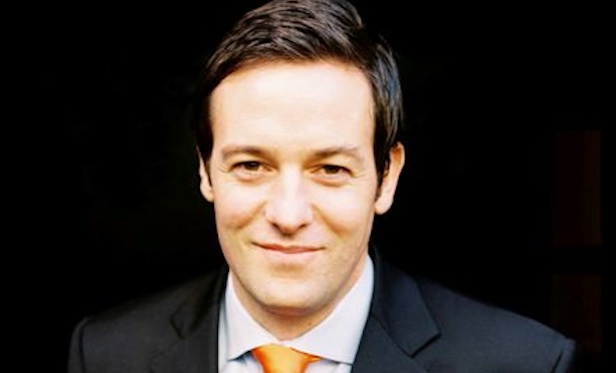 “The dynamics are different” in multifamily, says Von Der Ahe.
“The dynamics are different” in multifamily, says Von Der Ahe.
NEW YORK CITY—The latest semiannual forecast from the Urban Land Institute has a consensus of commercial real estate economists taking a slightly more cautious stance on the investment sales outlook than they did six months ago. Similarly, in a report published last week, by analysts at Keefe, Bruyette & Woods said they’re seeing volume and pricing moderating amid generally positive fundamentals.
Peter Von Der Ahe sees it too. “No matter what category you’re talking about, this year people are saying ‘okay, the market’s gone up for six years straight at this point, and it’s now time where we have to be a little more discerning about the moves we’re making,’” he tells GlobeSt.com. However, from his vantage point as first VP, investments at Marcus & Millichap and senior director with the firm’s Institutional Property Advisors division, he’s in a position to make a case for multifamily continuing to maintain its counter-cyclical appeal.
It’s a claim he wouldn’t necessarily make for other property sectors at the moment. In development, for example, “There’s a lot of question marks,” Von Der Ahe says. “Some people are going to get hurt, some people will be fine; it’s going to be a little confusing. In that category, you’ve got a lot of movement, and some of it is downward this year.”
He sees similar uncertainty in retail. “Looking at New York City specifically, a fair amount of the retail economy here comes from foreign tourists. They come in and they shop, and the strengthening of the dollar has impacted their disposable income. Given that, along with some of the concerns about the economy, you have question marks appearing around the retail landscape.” The near-term outlook for office is comparable, he adds.
Apartment deals are taking a little longer to come together, he acknowledges; “people are double-checking things.” But where multifamily runs counter to the current trend is in the dynamics of occupancy and rent growth.
“In a retail scenario where my store was renting for $100 per square foot two years ago, my rents may come down a little this year if that space became vacant,” says Von Der Ahe. “In the residential world, that one-bedroom that the owner was renting for $4,200 per month two years ago is now renting for $4,600. Maybe it’s not going up to $4,800 this year, but it’s probably staying at $4,600 or maybe it’s going to $4,650.
“So the dynamics are different,” he continues. “If things slow down a little bit on the economy side—which nobody really thinks is going to happen—maybe it just means I don’t get as big a rent increase, but I’m still full and I have a line out the door of people who want to my rent my unit.”
The broader economic picture is having another effect on investors’ thinking. “On Jan. 1, the stock market was at almost 17,000,” says Von Der Ahe. “Over the next 60 days we watched it go down to 15,000 and now it’s back up again. Talk to 10 people about that and you’re going to get 10 different opinions on why that happened. That’s not inspiring a lot of confidence. So from a defensive standpoint, people are saying ‘if I want to protect myself against inflation, if I want to participate in economic growth and have some diversity in my income stream, maybe multifamily in good locations is a good place to be.’”
This type of “counter-cyclical thinking” around multifamily wouldn’t be seen in other sectors, Von Der Ahe points out. “You wouldn’t say that if you were buying an office building, or wouldn’t say that if you were going to buy a development site, because with those categories, you want to time them right. They trigger big capital events, whereas if you buy a 100-unit multifamily building and your rents are diversified into 100 different tenants, it’s a different risk.”
From the vantage point that Von Der Ahe and his team focus on—the middle market of properties priced between $10 million and $100 million—there has been a slight change in investors’ behavior lately. “The difference we’re noticing is subtle—people don’t want to make a mistake, but they definitely want to buy.”

















 Copyright © 2024 ALM Global, LLC. All Rights Reserved.
Copyright © 2024 ALM Global, LLC. All Rights Reserved.